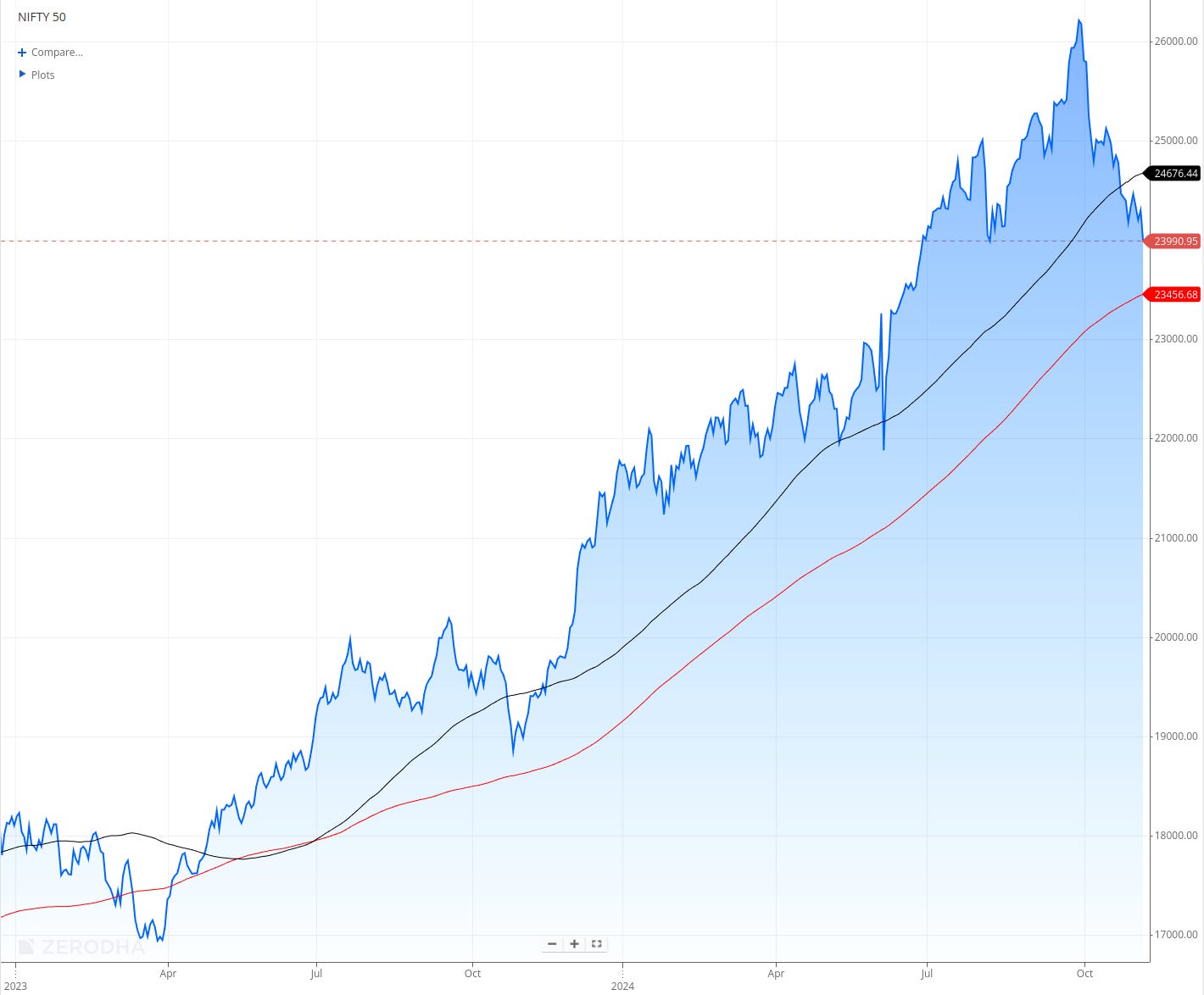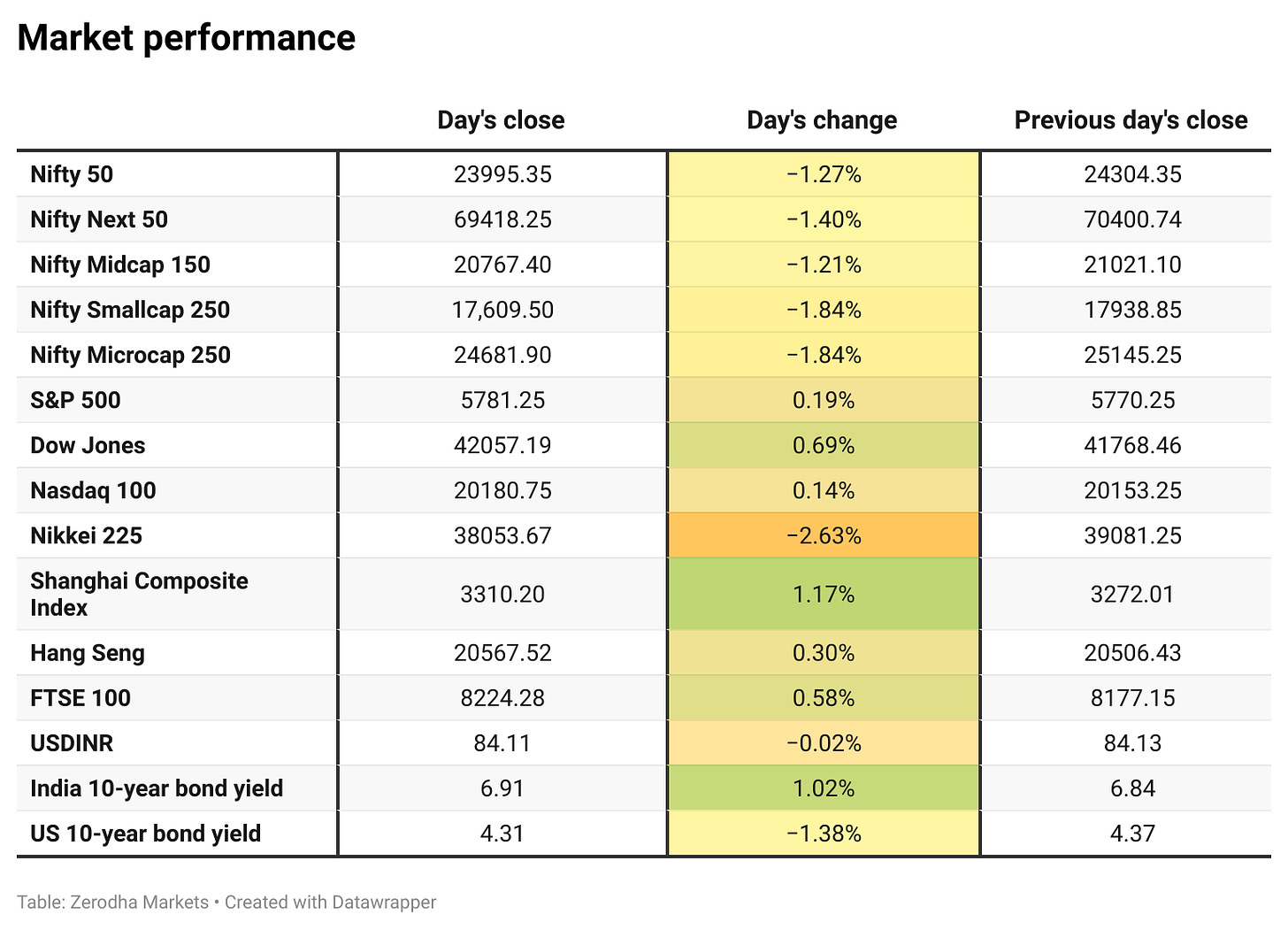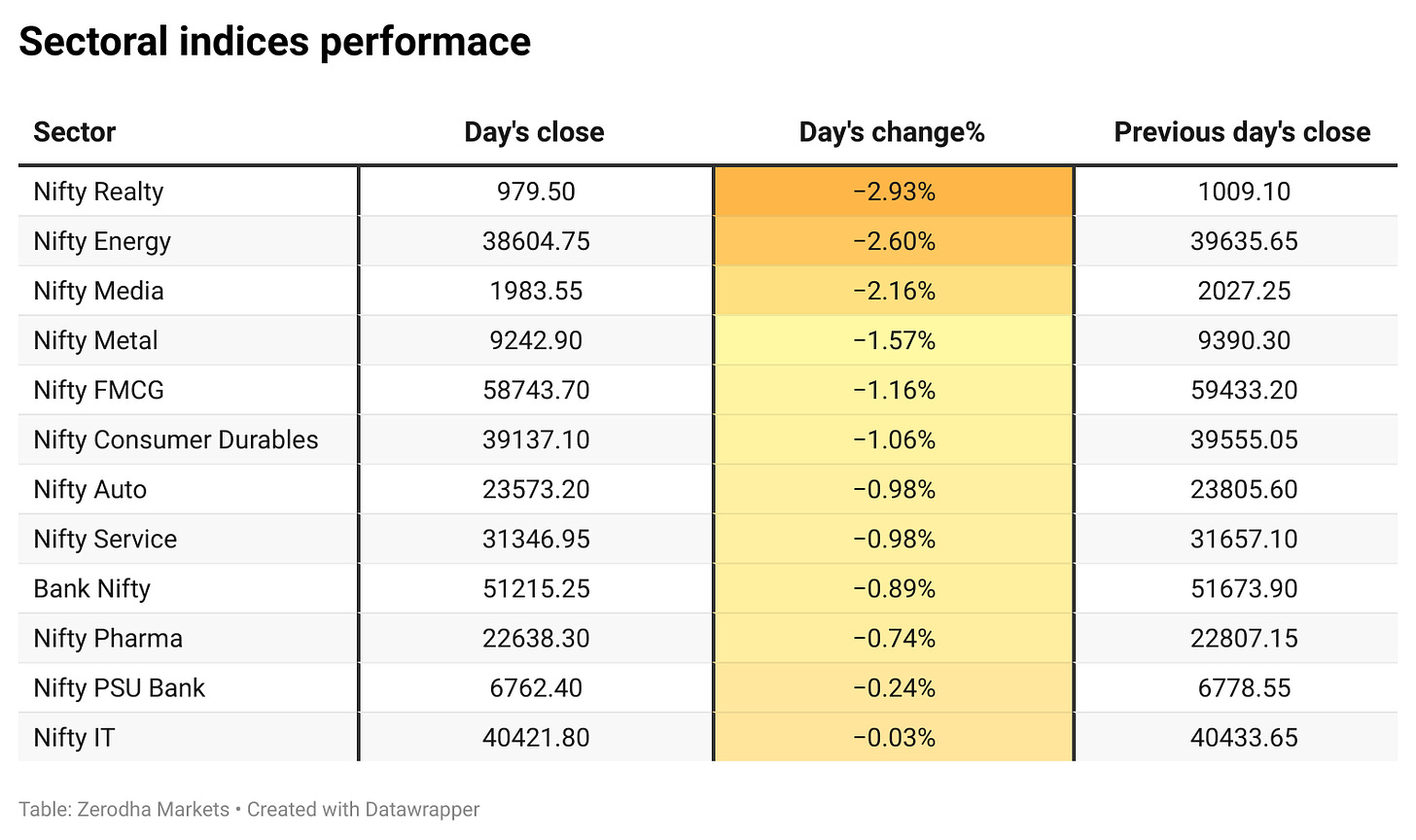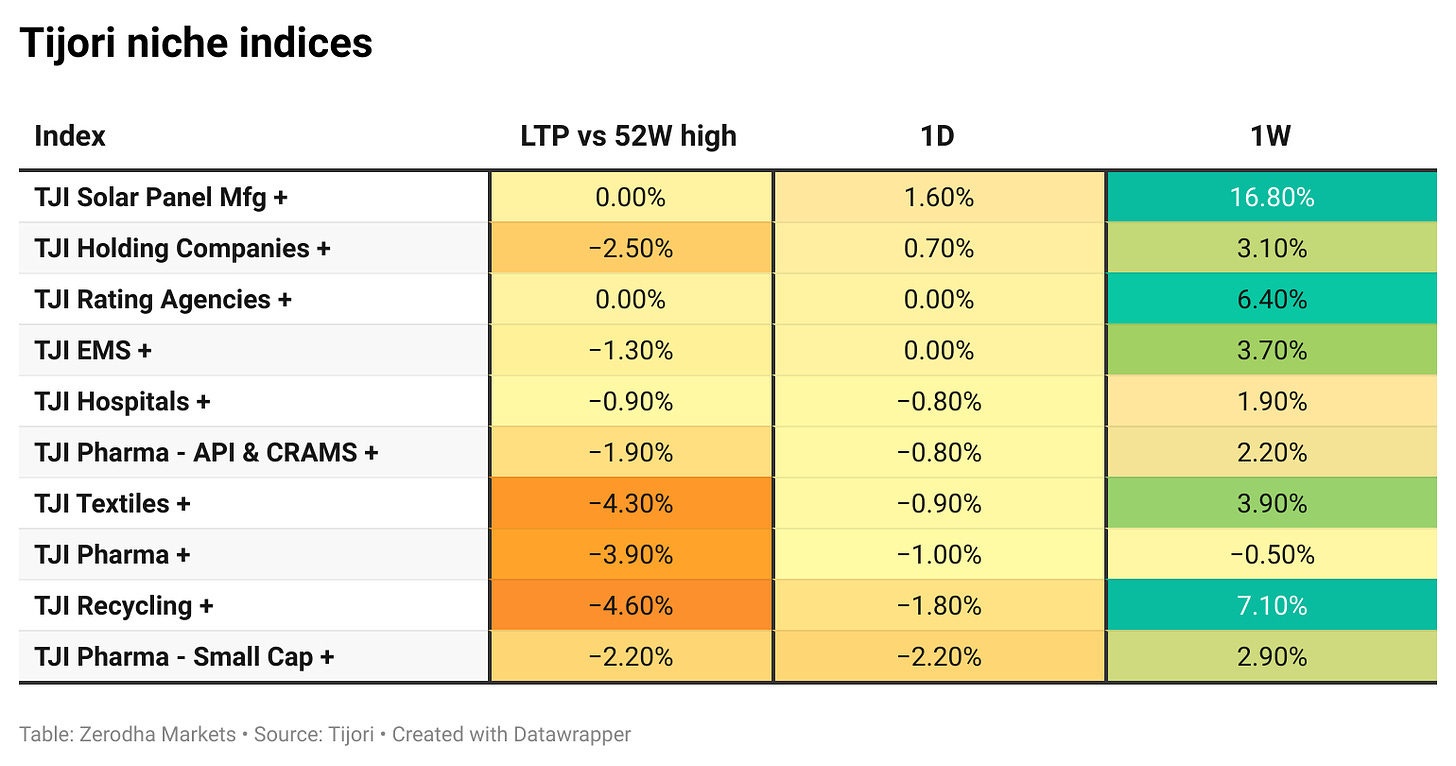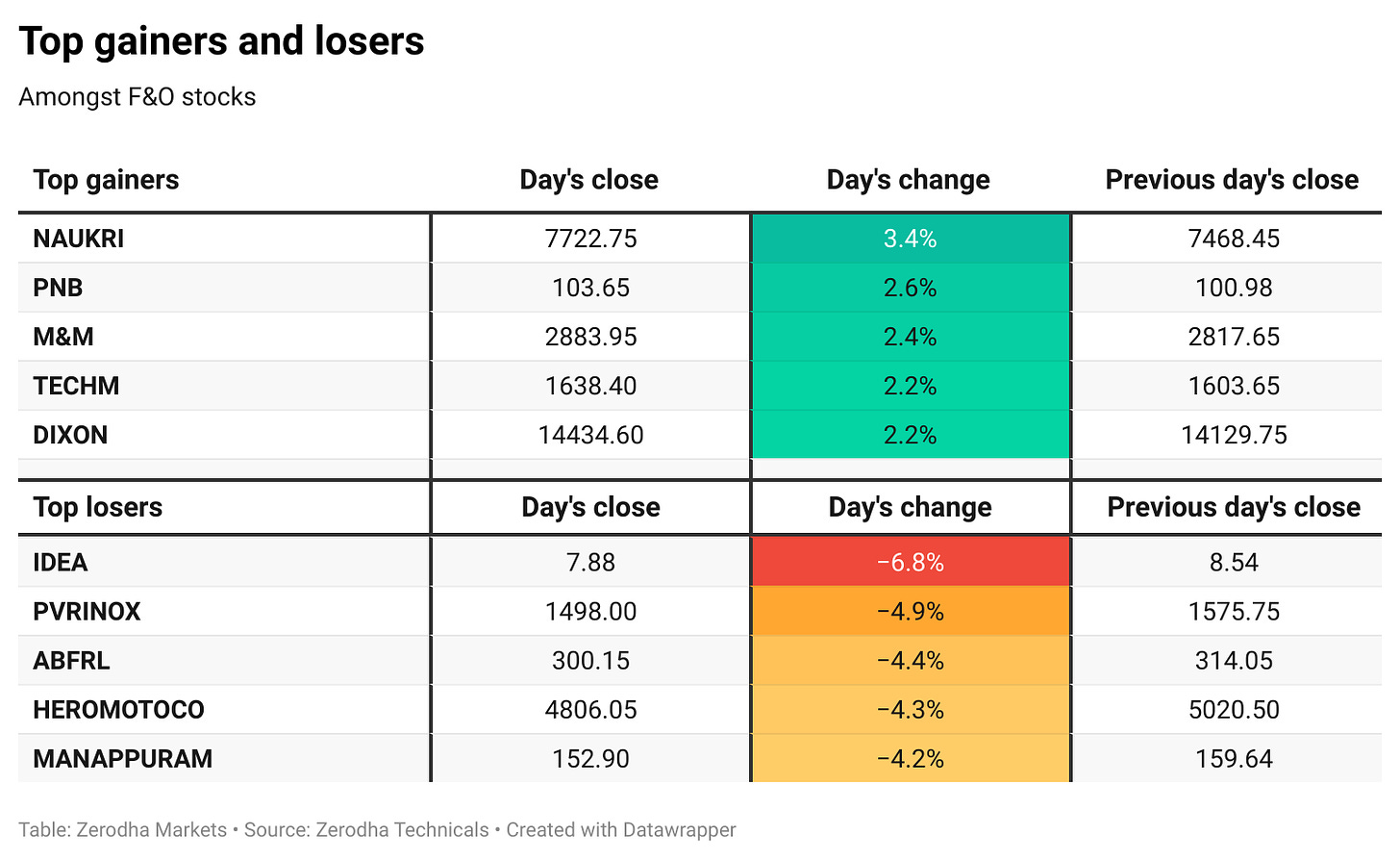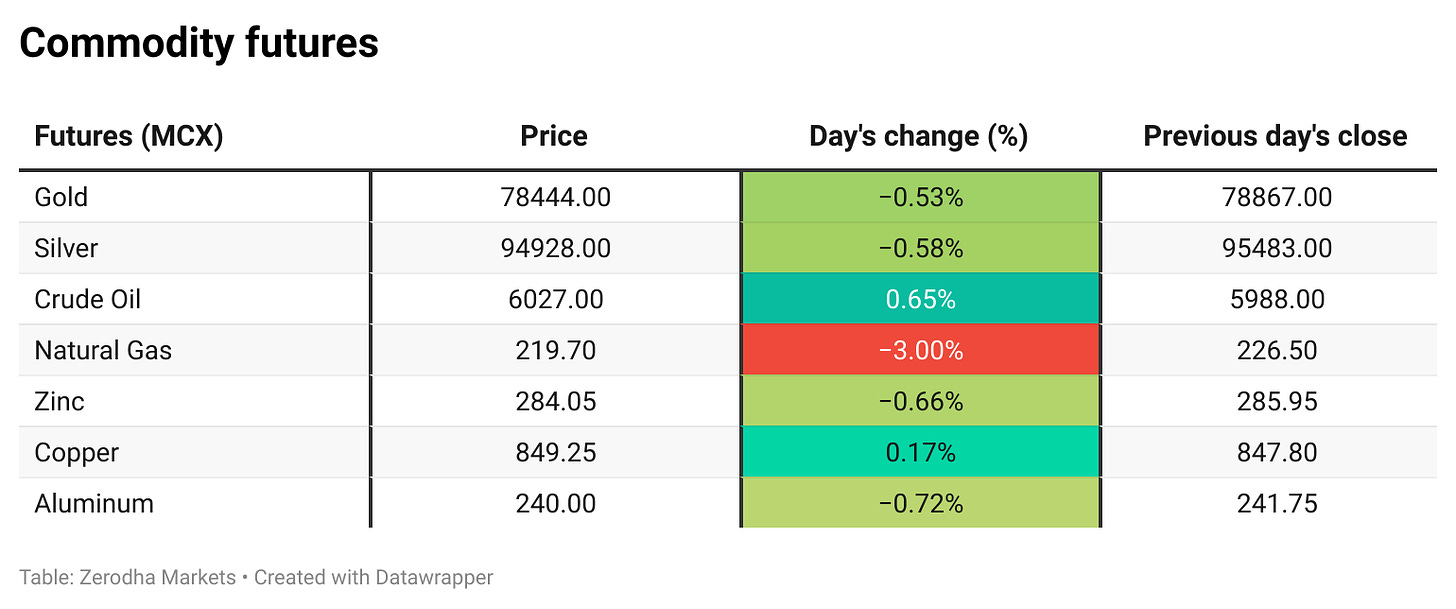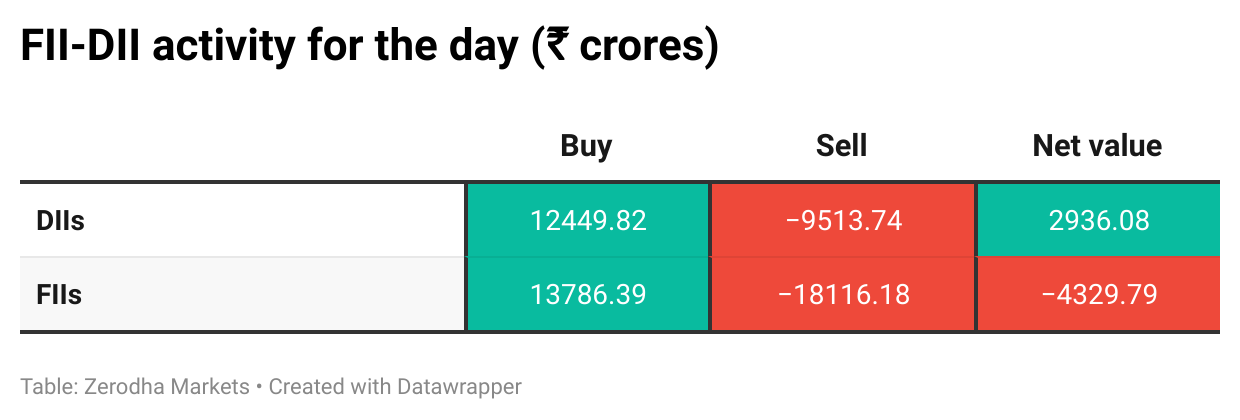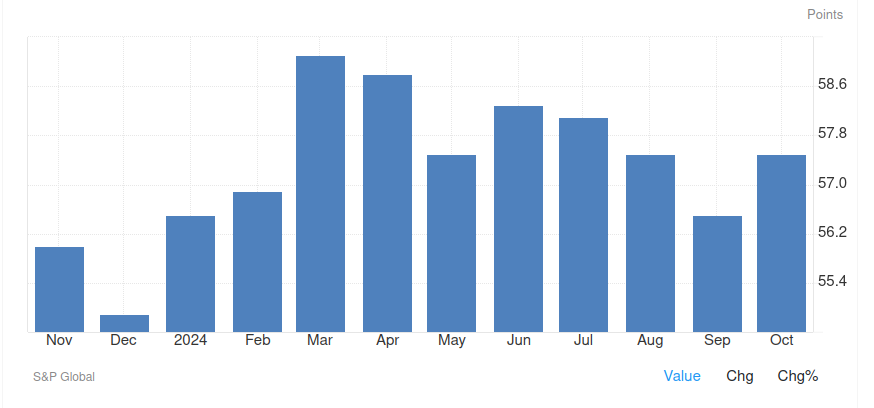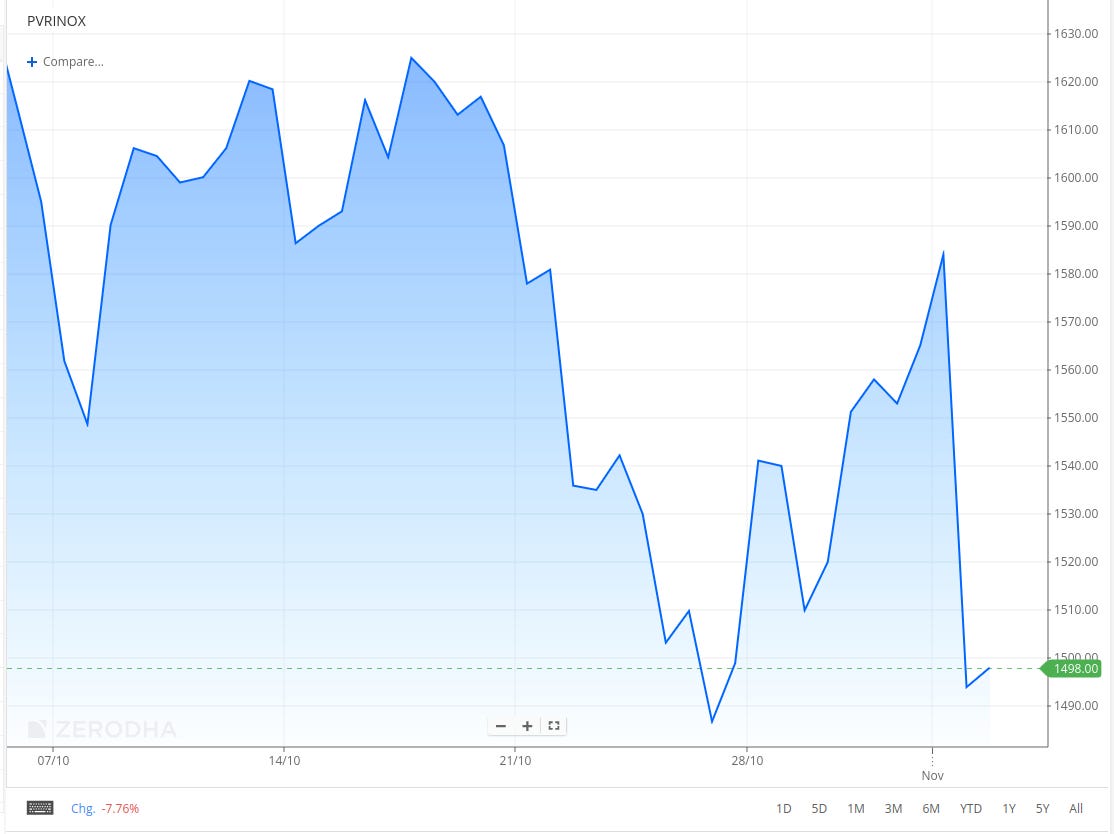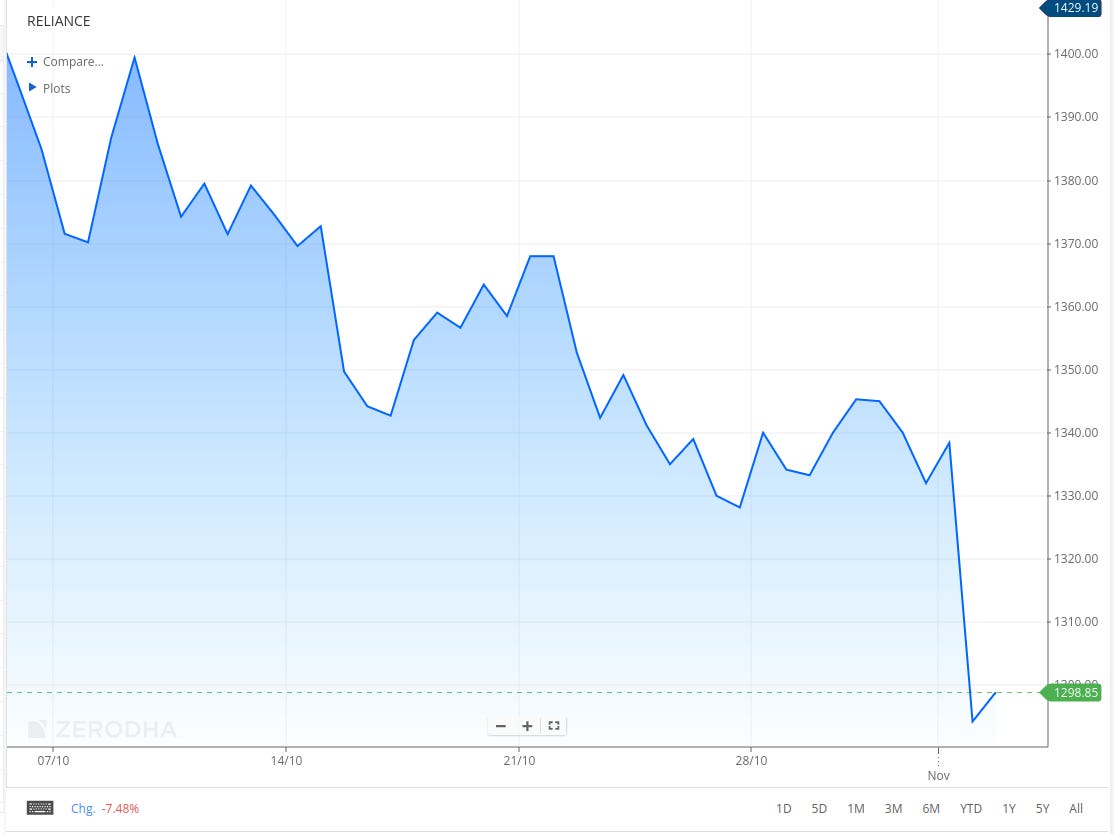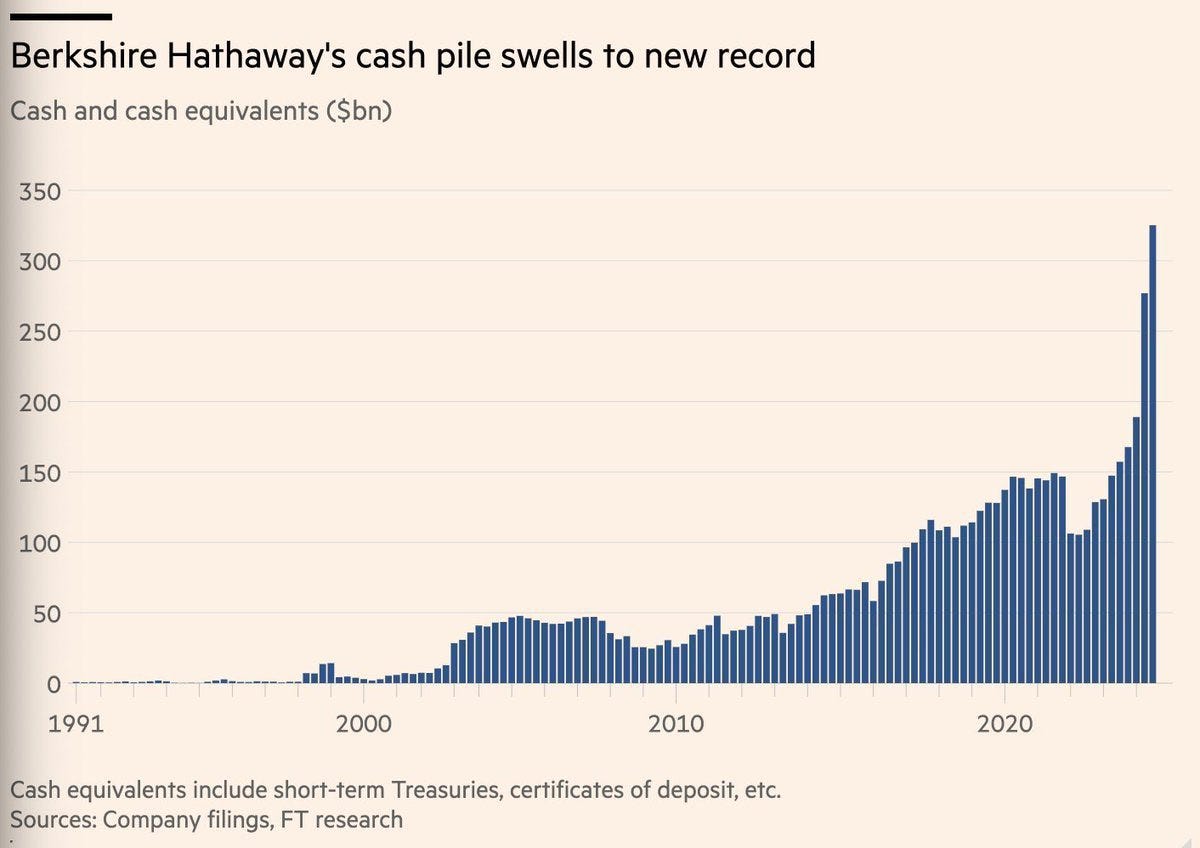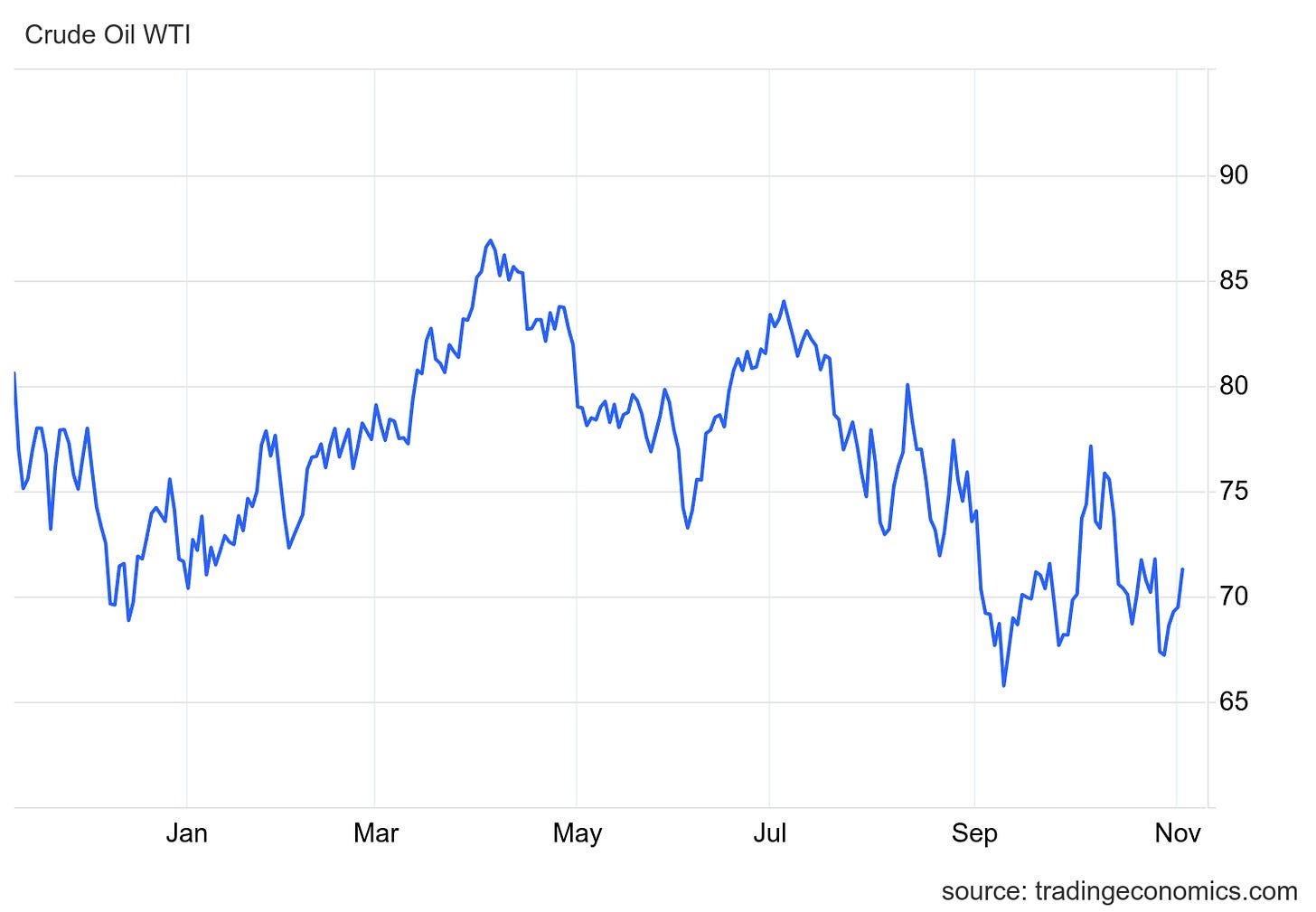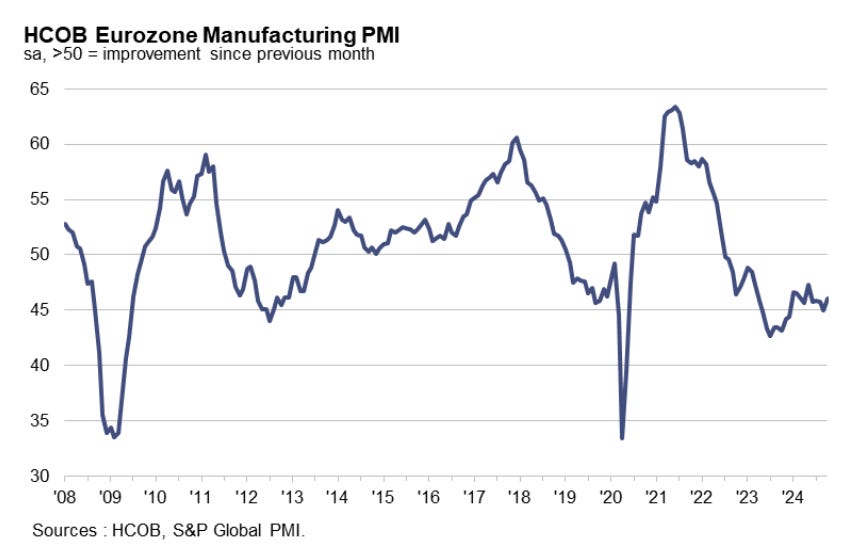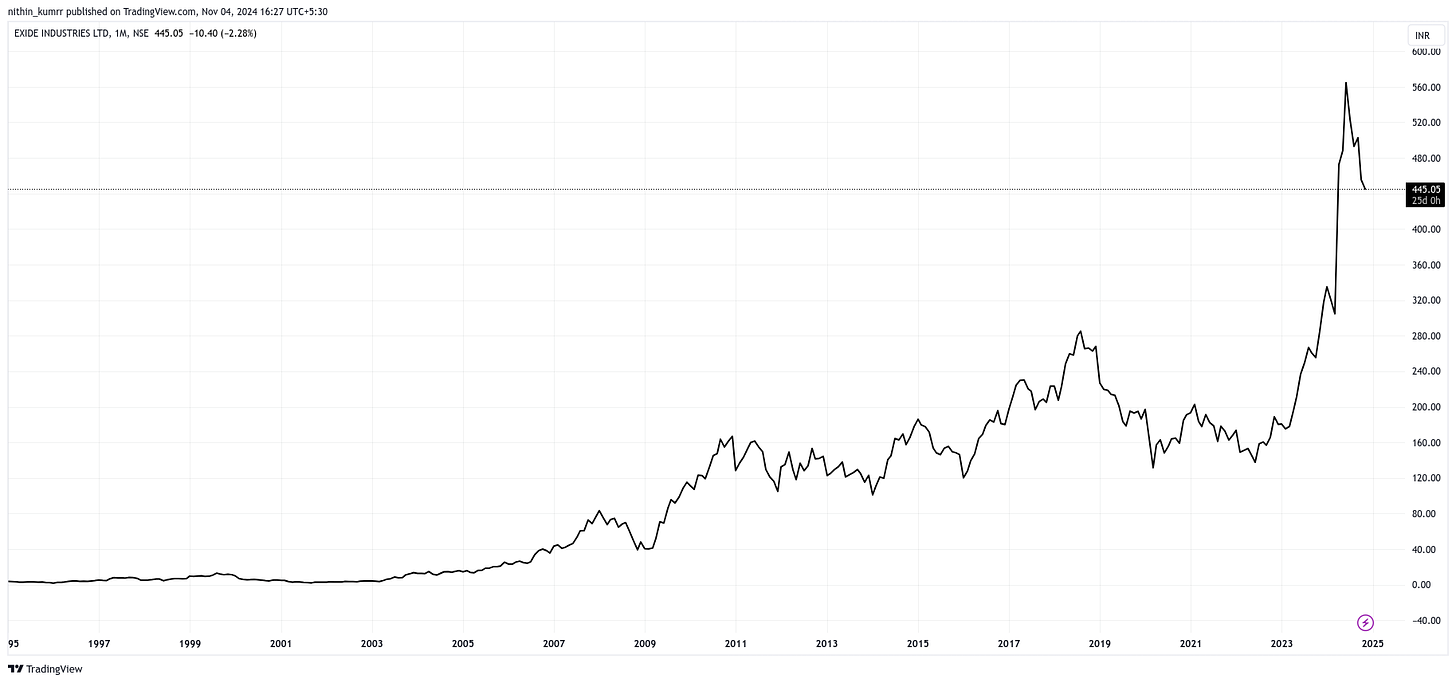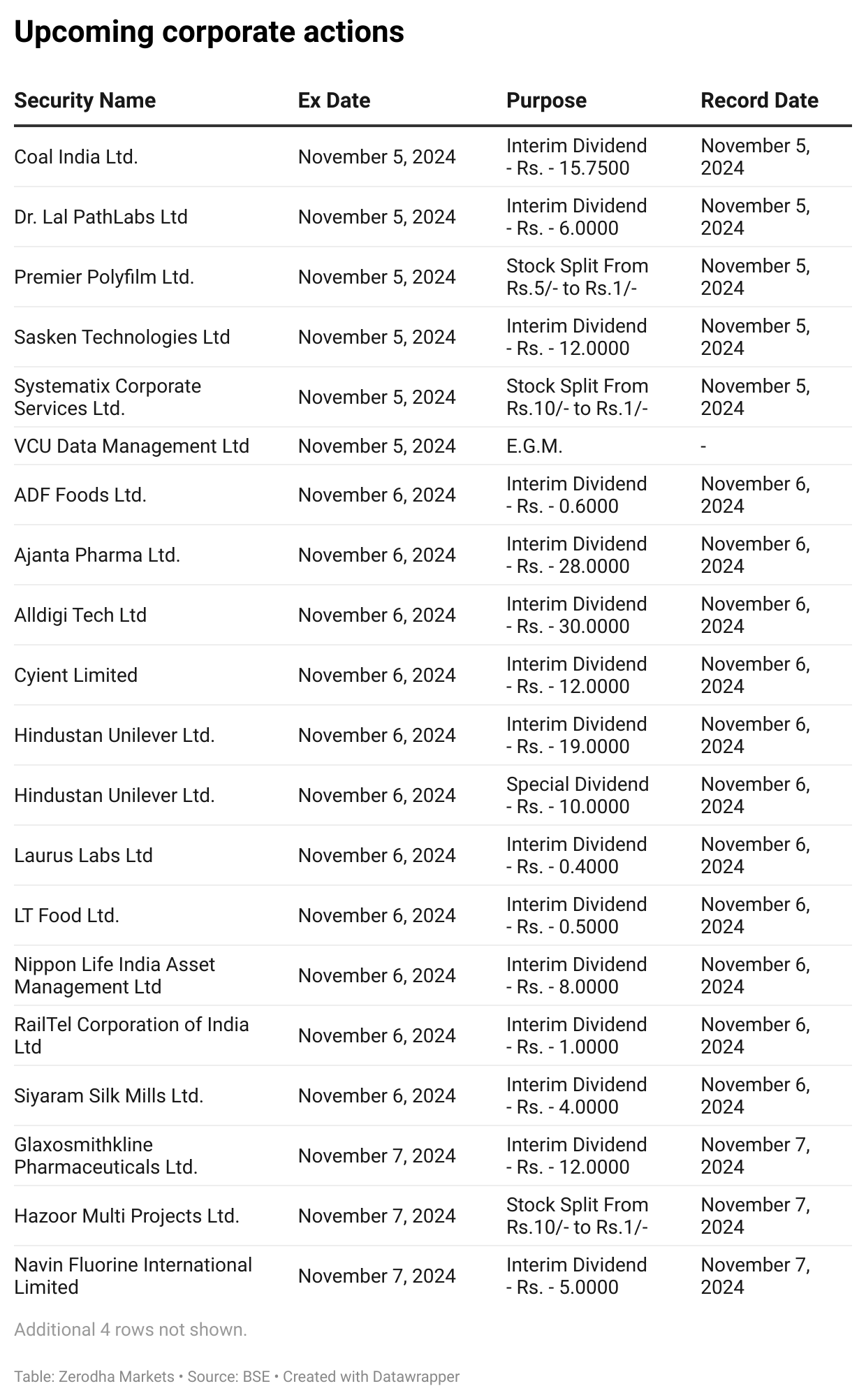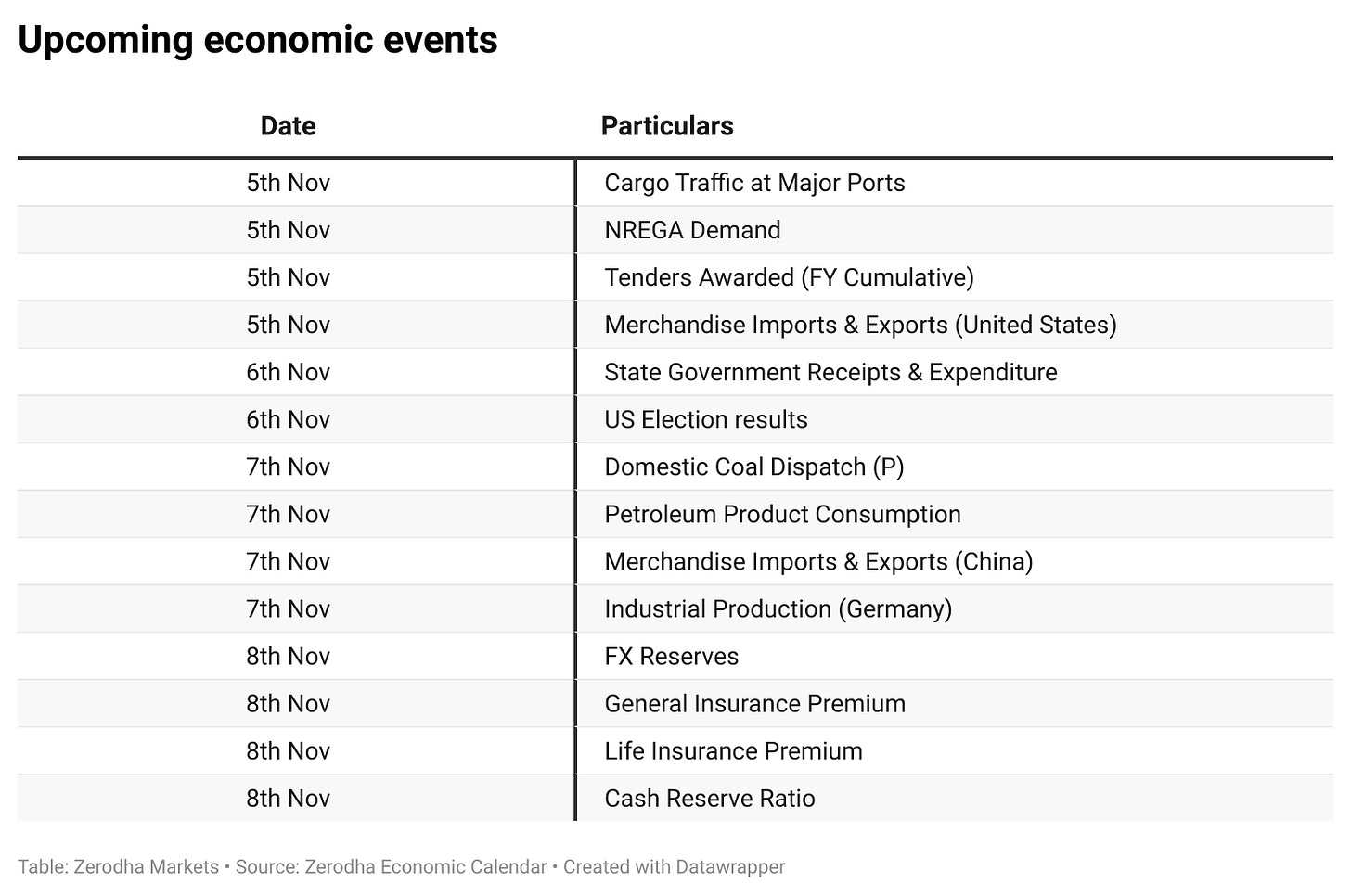Welcome to Aftermarket Report, a newsletter where we do a quick daily wrap-up of what happened in the markets—both in India and globally.
Market overview
Nifty opened flat at 24,315 but quickly dropped 500 points to hit an intraday low of 23,816, finally closing below 24,000 at 23,995, down 1.27%. The decline was broad-based, with three stocks falling for every one that rose (722 advances vs. 2,144 declines on NSE). Contributing factors likely include weaker earnings, ongoing FII outflows, and technical pressure as Nifty nears its 200-day moving average at 23,456.
Tijori is an investment research platform, and they have constructed niche indices for various themes and sub-sectors. They help you get a sense of the market performance of narrow slices of the market.
What’s happening in India
India’s manufacturing growth has rebounded, driven by a surge in new orders and exports
Source: Trading Economics
What Happened?
- October PMI (Purchasing Managers Index) rose to 57.5 from 56.5 in September, signaling strong manufacturing expansion
- Demand and new product launches drive surge in manufacturing output
- Manufacturing employment up as inflationary pressures continue
- Output has risen for the 40th consecutive month in the sector since July 2021
- Production volumes saw an uptick, particularly in consumer and investment goods, as firms reported favorable market conditions and robust demand pipelines
Why?
Sales grew thanks to higher order volumes, driven by new products and successful marketing campaigns. Exports bounced back after slowing in September, with new deals across Asia, Europe, Latin America, and the U.S. Higher demand and ongoing cost increases in materials, labor, and shipping led to higher prices for both supplies and finished products. Companies hired more workers to keep up with demand, which helped clear the backlog of orders for the first time in a year.
Source: Business Standard
PVR Inox stock falls despite big Diwali box office hits
What happened?
PVR Inox shares fell 4.93% to Rs. 1,498 despite strong box office earnings during Diwali, where “Singham Again” and “Bhool Bhulaiyaa 3” together brought in over ₹210 crore.
Why?
- Recent quarterly results showed a net loss of Rs 118 crore, compared to a profit of Rs 166 crore last year, with revenue declining by 19%
- Occupancy rates fell from 32.3% to 25%, indicating weaker demand even during the festive season
- Ticket sales and food & beverage sales dropped significantly: Ticket sales were down 25% year-over-year, while sales of food & beverage were down 18% year-over-year.
Reliance Jio IPO in 2025
What happened?
Reliance Jio, now India’s largest telecom company with 479 million users, is preparing to go public at a valuation of over $100 billion, Reuters reports. However, its sister company Reliance Retail has pushed back its IPO plans to after 2025 due to business hurdles.
Meanwhile, shares of Reliance Industries have fallen 7% in the last month following disappointing earnings, mainly due to problems in its oil-to-chemical (O2C) division.
Why?
- Lower global demand has impacted the oil-to-chemicals (O2C) segment, reducing profit margins
- Recent earnings showed slower revenue growth and lower profitability
- The O2C segment is expected to face continued pressure, raising investor concerns
What’s happening globally
Berkshire Hathaway’s cash pile hits record-breaking $325 billion
What happened?
Warren Buffett’s Berkshire Hathaway has reduced its Apple investment to $69.9 billion, selling roughly 100 million shares in the third quarter. Instead, Buffett is moving money into short-term Treasury bills, which has helped push Berkshire’s cash reserves to a new high of $325.2 billion. This shift follows a pattern where Berkshire has also sold other major holdings like Bank of America.
Why the sell-off?
Buffett’s decision to trim Berkshire’s Apple stake, which was once worth $178 billion, was partly driven by concerns over potential tax increases on investment gains. His cautious stance is clear in Berkshire’s recent moves—the company invested just $1.5 billion in new stocks last quarter, preferring to build up its record cash reserves instead.
This suggests Buffett sees few attractive opportunities in today’s market and is keeping powder dry for future investments.
Source: Financial Times
Oil prices rise as OPEC+ delays planned output increase
Source: TradingEconomics
What happened?
Oil prices jumped almost 2% after OPEC+ pushed back its planned production increase from December to January. Brent crude hit $74.49 per barrel, while U.S. WTI crude reached $70.90.
Why?
- OPEC+, a coalition of oil-producing countries including Russia, extended its current output cut of 2.2 million barrels per day for another month, aiming to support prices amid weak demand
- The delay surprised market watchers, suggesting OPEC+ has a stronger commitment to price stability than expected. The group plans to gradually ease cuts in the coming months while the additional cuts remain until the end of 2025
Source: Yahoo Finance
Eurozone manufacturing shows signs of stabilization
Source: S&P Global
What happened?
- Manufacturing activity in the eurozone contracted for the 28th consecutive month in October but at a slower pace than in previous months
- The Eurozone’s manufacturing sector is still shrinking, with the HCOB Manufacturing PMI at 46.0 (up slightly from 45.9). While this shows some improvement, any reading below 50 means the sector is still contracting.
- Manufacturing output and new orders showed modest gains, with the output index climbing to 45.8 while new orders hit a four-month high of 44.2. Though still in decline, these improvements suggest the sector’s downturn may be easing.
Why?
Factories are cutting prices at the fastest pace since April as demand remains weak, though falling less sharply than before. This price reduction strategy, combined with slowing inflation, supports the European Central Bank’s recent moves. The ECB has already cut rates three times this year and might lower them again in December to help stabilize the economy.
Source: Investing.com
Quarterly results
In this section, we’ll dive into all the key highlights from today’s intriguing results, covering the most impactful performances and standout moments. The numbers are comparable on a year-on-year (YoY) basis.
Exide Industries (-3.03%)
What happened?
- Net profit declined 13.66% YoY to Rs. 233.4 crore from Rs. 270.32 crore, impacted by higher expenses.
- Revenue grew slightly to Rs. 4,450 crore from Rs. 4,371.52 crore a year ago.
- Expenses increased by 2.8% YoY to Rs. 4,157.63 crore.
- EBITDA margin at 11.3%, down from 11.8% last year.
Why?
- Margins were impacted by higher costs, particularly in raw materials.
- Strong demand in two-wheeler, four-wheeler, industrial-UPS, and solar segments.
- Investments in the lithium-ion project and subsidiary Exide Energy Solutions Limited added to expenses.
Management chatter
In this section, we pick out interesting comments made by the management of major companies.
JP Chalasani, Group CEO, Suzlon Energy on entry into the Solar business:
We never spoke about getting into solar and We’ve been on record always saying that we would remain in our core business, and anything connected with that is what we will keep doing. But at the same time, we said that if there is any client who wants us to do the full project which includes solar and wind components, we are willing to take that up job and two for the client because they want one single supplier. There’s no such contract for a hybrid project given to us. So, therefore we getting into solar at this stage doesn’t exist. - Link
Rashesh Shah, Chairman, Edelweiss Financial Services on SEBI’s new asset class
We will definitely want to look at it. Our early-stage analysis for that category is that a lot of that is going to be a proxy or eating into the PMS and equity AIF market. As you know, there are a lot of equity AIFs out there, and there is PMS where there is a lot more flexibility out there. Very similar products on the mutual fund platform will have income tax advantages as compared to AIF. We think this new asset class under mutual funds is going to be for equity-oriented strategies. - Link
Abhishek Somany, MD & CEO, Somany Ceramics on Tile Industry demand
Across the country, the demand has been muted. In fact, the South is probably slightly more affected because the base was higher, but otherwise I think it is across the country where we have seen the muted demand. The rains have been completely across the country and covered the entire country. Also, from Morbi perspective, which is the cluster that makes tiles, a lot of that gets into the South market because it is easy for them to transport by sea from the Kandla port, it goes directly into the Kerala market, directly into Tamil Nadu market. So, from that point of view, the South gets a lion’s share of Morbi produce other than the West. So, overall, the demand has been muted. - Link
Calendars
In the coming days, We have the following quarterly results and other major events:
That’s it from us. Do let us know your feedback in the comments and share it with your friends to spread the word.
We’re now on Telegram, follow us for interesting updates on what’s happening in the world of business and finance.

